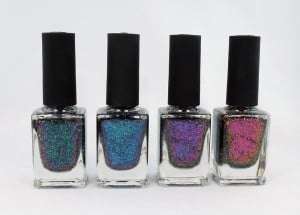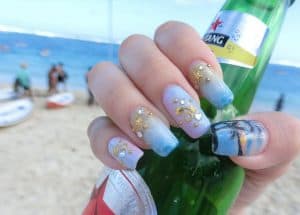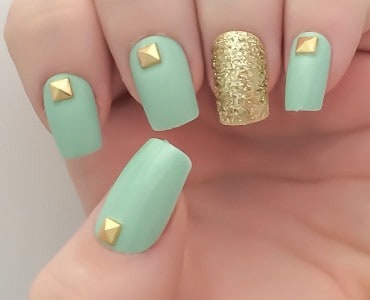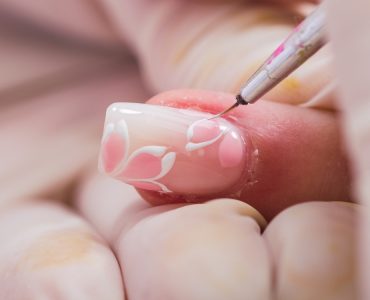Who doesn’t love nail polish? From a fun activity at sleepovers to a way to relax and unwind on the weekend, nail polish has been around for a long time. There are so many different styles to explore from trendy and chic, to elegant and professional. Nail polish actually plays an important role in fashion and business. Not to mention, it makes us feel pretty.
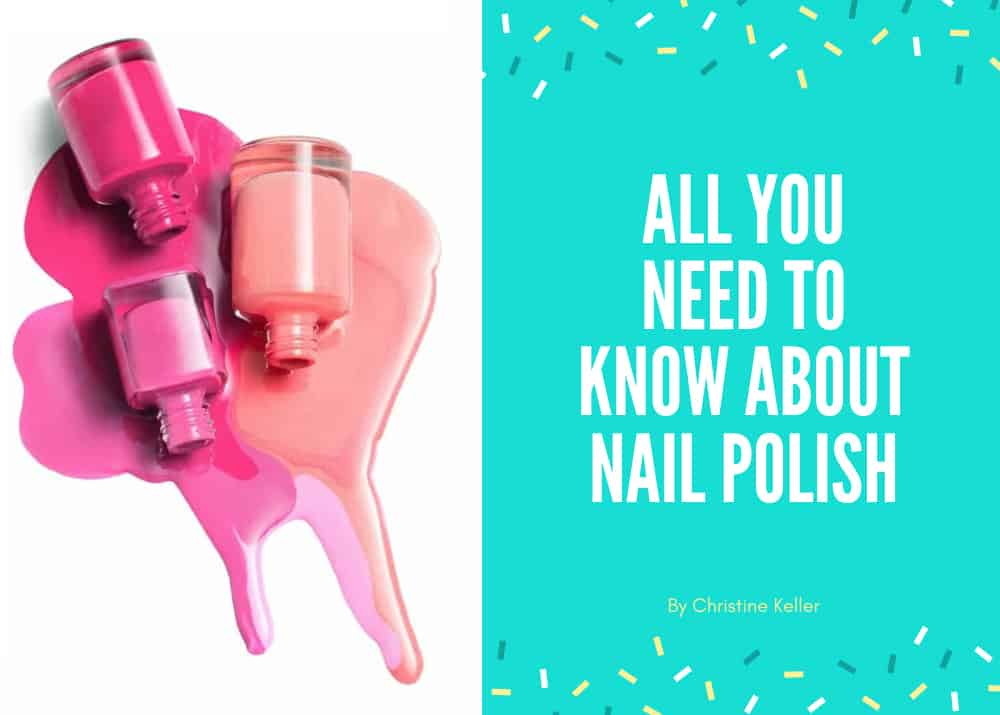
Nail polish at its core is a colorful way to accessorize. But you may be wondering about the origins of nail polish. Who first began using it and why? There are many questions about nail polish you may never have even considered before but are curious to discover the truth. Here are six frequently (or not so frequently) asked questions about nail polish:
Who Invented Nail Polish?
Way before nail polish became the fad it is today, it was used by men during war time in preparation for battle. Nail polish dates back to 3200 B.C. when Babylonian warriors would get their nails manicured and colored before going off to battle. They would also get their hair lacquered and curled.
Around 3000 B.C. it was used in China and Ancient Egypt to distinguish someone by dynasty and class. Ruling dynasties often worse bright and vibrant colored nails while lower classes had to wear more pale or nude colors or they were not allowed to wear any at all. Failure to follow this rule was punishable by death.

Fast-forward to modern era. In 1878, the first manicured salon debuted in Manhattan. And in the early 1900s, clear nail polish became available for consumers as the invention of the car and automobile paint brought inspiration. Then in 1932, Revlon established itself as the first nail polish brand.
What Ingredients Are in Nail Polish?
Nail polish contains a number of different chemicals in order to work properly. Each ingredient is important to protect the polish to resist peeling or chipping away.
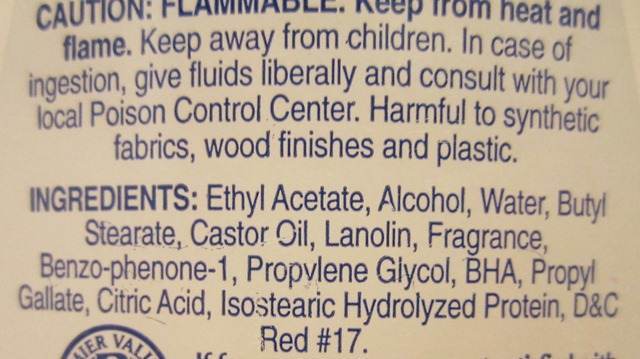
Solvents – Often the first ingredient in nail polish. A solvent is a liquid that can be used to mix different ingredients. Once you apply the nail polish, the solvents dissipate. Examples of solvents include:
Toluene – a colorless liquid hydrocarbon that can be found in petroleum and coal tar.
Ethyl acetate – a colorless liquid that can be volatile. It is characterized as having a fruity smell and is often used as in perfumes and flavorings.
Butyl acetate – an ester, or organic compound, is a colorless liquid. Can be flammable when kept at room temperature.
Read This Next:
Xylene – an aromatic hydrocarbon used in staining, cover slipping, and tissue processing.
Formalin (formaldehyde in water) – this colorless solution is typically used as a preservative.
Formaldehyde – a strong-smelling, colorless chemical used to produce many household products and building materials. It can be highly flammable.
Isopropyl alcohol (isopropanol) – a liquid alcohol used for the industrial production of acetone.
Some of the products mentioned can be toxic, which is why the nail polish you buy will likely only contain trace amounts of some of these ingredients.
Resins – serve as an adhesive to keep the polish layered onto the nails. Resins add hardness, depth, and the shiny gloss you love to the substance.
Film formers – this is what makes the nail polish smooth and silky. A common film former used in nail polish is called nitrocellulose. Nitrocellulose is a highly flammable material that is created by combining cellulose with concentrated nitric acid.
For a basic clear nail polish, nitrocellulose is dissolved in acetate and once the solvent has evaporated, a shiny film remains.
Is Nail Polish Toxic?
Were you ever curious why most nail salons have that distinct smell that hits you right away the moment you step inside?
Just like most products today, nail polish makers are not required to provide a list of ingredients they use. This is why people are usually clueless as to what they put on their bodies in the first place.
Every time you paint your nails, you don’t just breathe in the smell of the nail polish together with the smell of top coats, treatments, and removers. Your skin and nails also absorb all the chemicals present in the nail polish, including some that are possibly toxic.
So, what are these chemicals found in nail polish?
Read This Next:
Toxic Chemicals Present in Nail Polish
Dibutyl phthalate (DnBP)
The endocrine disruptors phthalates are associated to different problems such as diabetes, thyroid irregularities, and hormone changes.
Formaldehyde
This is a type of known carcinogen.
Toluene
It is linked to a long list of side effects from nervous system and kidney damage to eye irritation.
Chemical Content of Nail Polish to Watch Out For
Camphor
This can cause disorientation and seizures. Did you notice your nails turning yellow because of painting them? This is all because of camphor that strips off their nutrients.
Epoxy resin or ethyl tosylamide
Even though this is rated as low hazard, some makers of non-toxic nail polish state that it is a type of antibiotic, thus contributing to antibiotic resistance.
Formaldehyde resin
This a formaldehyde derivative that is typically used as harder and can act as skin allergen in large doses.
Hydroquinone monomethyl ether (MEHQ or HQ)
This can cause eye and skin irritation.
Lead
Lead can harm almost all of the body’s organ systems and is associated to a wide array of health effects from kidney and brain damage to HPA axis disruption.
Methylchloroisothiazolinone (CMIT) or Methylisothiazolinone(MIT)
These are preservatives associated with allergic reactions, lung toxicity, and even neurotoxicity.
Parabens
Parabens are common preservatives that are also endocrine-disruptors mimicking the body’s estrogen.
Triphenyl phosphate (TPHP)
It is a type of endocrine disruptor that affects different things from development and reproduction.
Xylene
This can cause irritation to the eyes, respiratory tract, and skin. It gets absorbed quite fast once inhaled and is also potentially carcinogenic.
Read This Next:
Many studies claim that these chemicals shouldn’t be a cause for concerns since exposure to such toxins is quite small. But, how about people who love painting their nails weekly or even more often? More importantly, what about those nail technicians spending most of their time working in close contact with toxins day in and day out?
It doesn’t matter if you love to paint your nails with sparkling colors or black to suit your unique personality or you prefer professional nude tones, it is imperative that you know what is in the products you use and make smart and safe choices. It is even more critical for people who are working closely with such products daily.
Unfortunately, it calls for major changes in policies. But, having a good idea of what can make nail polish toxic can give you an opportunity to opt for safer personal choices for yourself and your loved ones and to stimulate grassroots change through expression of the need to make the necessary changes for the salon workers’ safety.
Is Nail Polish Flammable?
The short answer: yes.
Nail polish is extremely flammable, mainly because of the amount of acetone it contains. The chemicals that make up this colorful finger paint can easily ignite if exposed to the right about of heat.
According to ABC News, a woman caught on fire when she absentmindedly sat a lit candle in close proximity to a bottle of nail polish. The nail polish immediately went up in flames and the women suffered third degree burns.
Not only is nail polish likely to catch on fire, it can also be dangerous and cause health problems if not handled properly. When used in an area with a lack of ventilation, the fumes can be quite powerful and lead to headaches, nausea, and dizziness.
When ingested, it is quite poisonous and when large doses are consumed it can actually result in a coma.
How Long Does Nail Polish Last?
Nail Polish does not last forever and actually have a shelf life. Although a bottle of nail polish that has never been cracked open can last a lifetime, once you do open it, the ingredients will begin to evaporate after about two years.
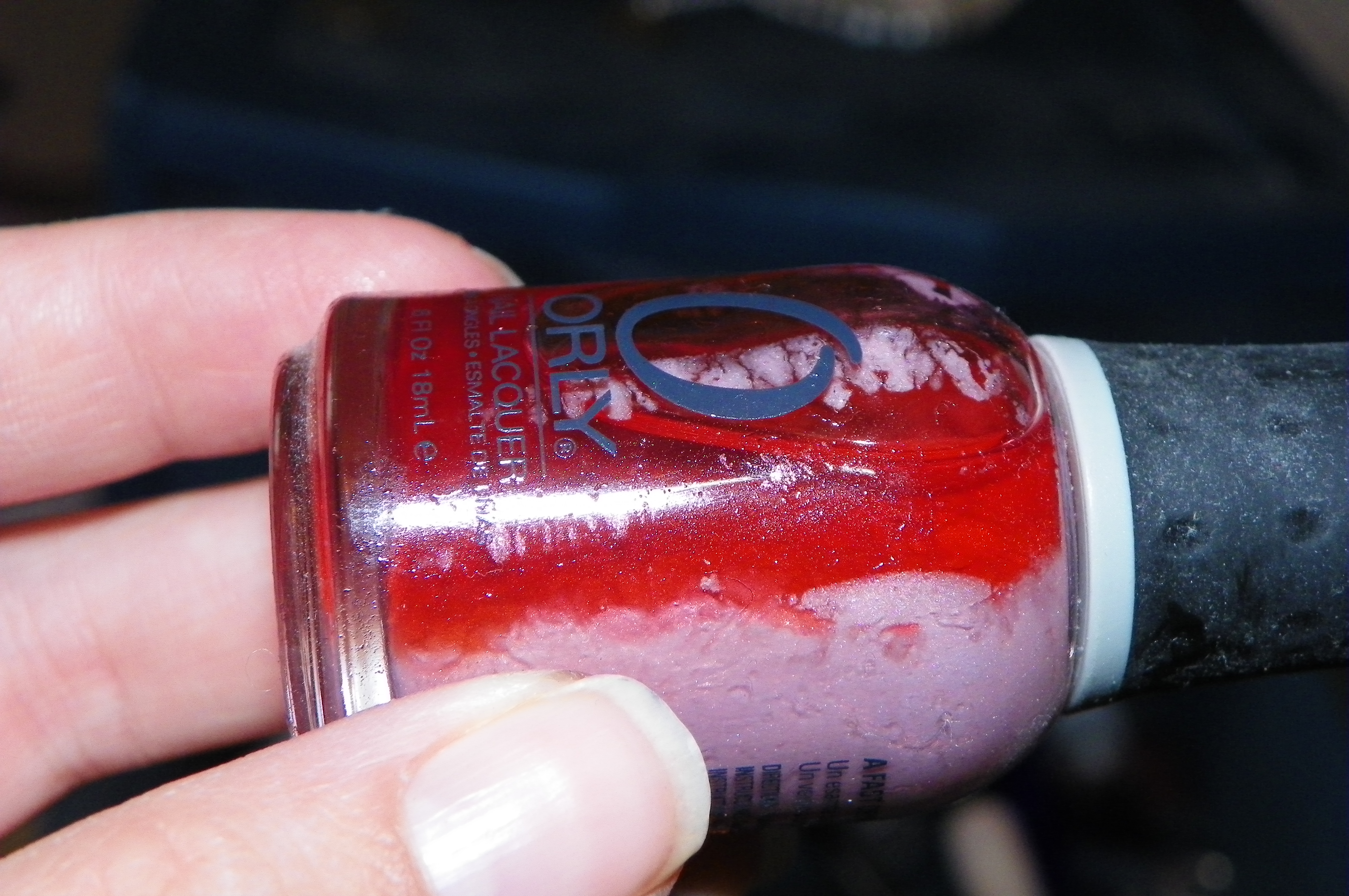
Is Nail Polish Suitable for Kids?
For many reasons mentioned above, putting nail polish on young children is not advisable. The risk of the child ingesting the product after putting her hands in her mouth or touching her face. Avoid using nail polish remover with acetone for kids as well.
There are all-natural, non-toxic nail polishes available that are designed with kids in mind. However, because this type of is nail polish is water-based rather than chemical based, it is completely safe for kids to use but it may also wash off easily.



